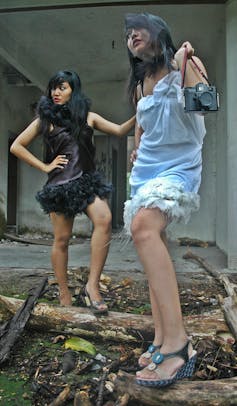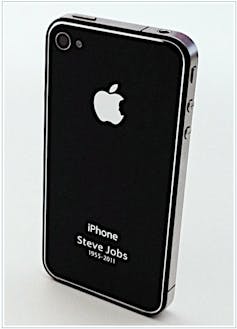“It’s not just a _____, it’s an experience.”
Substitute the blank space above with just about anything these days (car, meal, city, website, course, concert, charity, therapy), and you get the unofficial catch cry of the early 21st century.
Whatever you have to promote to the world – among the endless options in category X competing for attention – is not desirable without it being an “experience”.
But what exactly does that mean? And what does it mean for the two groups of people who potentially collaborate to provide it – the creative types and the business types?
Experience and design
Experiences are ultimately about human perceptions, memories and impressions. Psychologically speaking, how a person experiences an event or phenomenon is an emotional and rational response to an outside stimulus.
Once lived, an experience can be stored as a memory within a person’s mind – and we all know we like to keep pleasant memories that “stick” for the right reasons.
Design usually falls into the domain of the creative types; but “design thinking” is becoming an acceptable and popular practice for just about anyone. As Tim Brown, CEO of global design firm IDEO put it:
Design thinking is a human-centred approach to innovation that draws from the designer’s toolkit to integrate the needs of people, the possibilities of technology, and the requirements for business success.
That means anyone who wishes to innovate can design – that is, visualise, map, conceptualise, sketch – solutions based on gathering knowledge of how people behave in terms of technological use or non-use, and how this knowledge can advance the aims of an endeavour.
When we talk about designing experiences, it is important to first understand how certain types of people experience something in context, and then design or facilitate experiences that make a positive difference for people.
Exponomy
In the US and Europe, the so-called “experience economy” (also known as exponomy) is on the rise as a potentially transformative concept for businesses, consumers and society in general. The idea can be traced back to 1998, when B. Joseph Pine II and James H. Gilmore of Harvard Business School introduced a new way of thinking about commodities not just being about goods and services.
Commodities were, the pair argued, more about human experiences that are highly memorable and emotionally engaging enough to sustain long-term value and relationships. Such experiences were powerful enough to change the ways in which people lived and behaved. In short, Pine and Gilmore believed people were willing to pay more for the commodity with the X-Factor.

This suggests companies need to pay much closer attention to the design of experiences co-created by their customers. Businesses need to provide opportunities for customers to participate in experience design through user research. Similarly, a collective mindset needs to be cultivated that allows businesses to realise the interrelatedness of different companies and industries.
This would help them design for experiences that are collaborative across different sectors. For example, a major fashion event would collaborate with the entertainment, media and tourism/hospitality industries to provide an audience with a lasting impression through a multi-sensory experience that is both enjoyable and prosperous.
In recent years, “experience” related positions such as User Experience (UX) Designer/Researcher and Chief Experience Officer (CXO) have increasingly become more visible in organisations of all types.
While some creative positions have a narrow focus on designing digital experiences for website users, others at the senior executive level, such as CXO, aim to plan and maintain a more holistic user-business-technology experience, including “blended” experiences online and offline.
Some experience designers work as freelance consultants, either independently or as part of a design firm, for clients in a range of sectors.
Experience design globally and in Australia

In practice, experience design has grown to include the personalisation of experiences through better understanding of different types of human beings combined with unique, innovative ideas developed by company leaders. Perhaps the most well known example of a globally influential and transformative experience-based commodity is Apple.
Apple changed the way people experienced technology with simple interfaces, interactive gestures and memorable branding permeating the products through to their digital and in-store service. This design was a combination of user needs and behaviour which Apple designers perceived and their own creativity, as Steve Jobs himself put it:
Creativity is just connecting things. When you ask creative people how they did something, they feel a little guilty because they didn’t really do it, they just saw something. It seemed obvious to them after a while. That’s because they were able to connect experiences they’ve had and synthesise new things. And the reason they were able to do that was that they’ve had more experiences or they have thought more about their experiences than other people.
A lot of people in our industry haven’t had very diverse experiences. So they don’t have enough dots to connect, and they end up with very linear solutions without a broad perspective on the problem. The broader one’s understanding of the human experience, the better design we will have.
While the tech industry in the US seems to have embraced the experience economy (with US-based innovation firm frog this year declaring its “coming of age”), the concept has impacted upon many types of businesses and sectors across the globe.
Australian businesses are now starting to acknowledge the emergence of the experience economy with sectors such as (but not limited to) arts and entertainment, tourism, and higher education re-thinking their roles as key players.
Recently, the Australian independent music industry was explored conceptually for the first time using an experience-economy lens, acknowledging the complex relationships and interactions between music business entrepreneurs, musicians, music fans, and the digital and live music experiences.
While these elements usually work in isolation, the exponomy (and experience designers/CXOs who implement the concept) are able to unite them on common ground. Furthermore, exponomy highlights the fusing of industries towards increasing value for all stakeholders involved in a given venture.
A good example of this is the recent collaboration between Australian musicians and wine tourism campaigns, featuring a Nick Cave classic soundtrack for the Be Consumed at Barossa Valley cinematic multi-sensory advert (see above).
The ad won international acclaim as best tourism ad at Cannes and has succeeded in its goal of attracting more tourists to visit Barossa Valley as a result. This shows that real-life experiences can begin with audio-visual tempters designed to engage imaginations on a personal level.
In the same way, higher education in Australia as a major service provider is currently reframing its understanding of how to design for diverse experiences for students, teachers, researchers and research users.
Designing experiences that acknowledge, enthuse, inspire and potentially positively transform the whole person – not just the customer, employee, student or statistic – appear vital to sustaining long-term partnerships.

